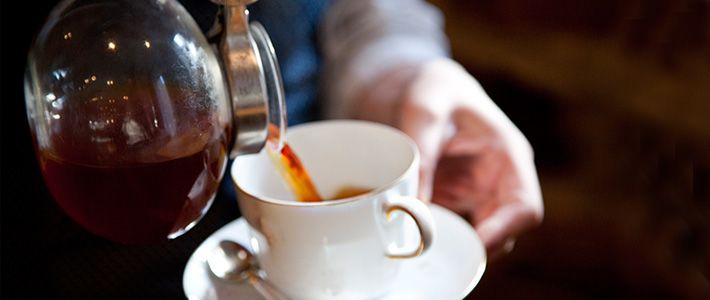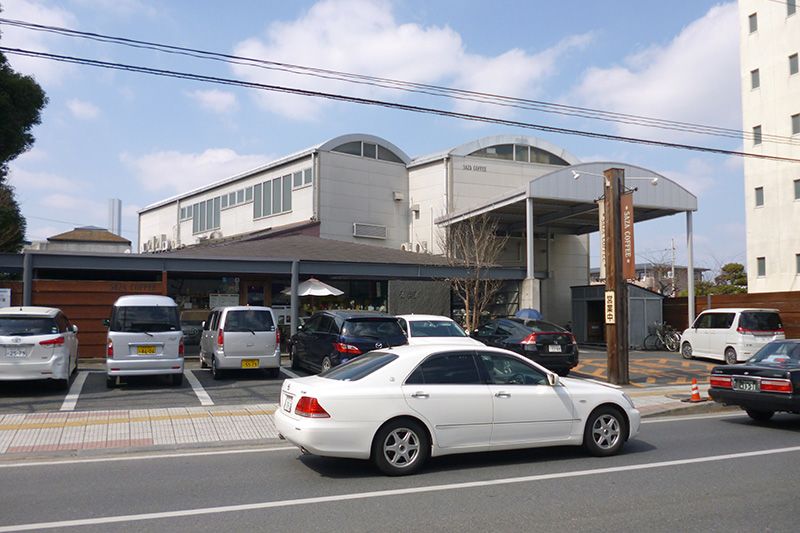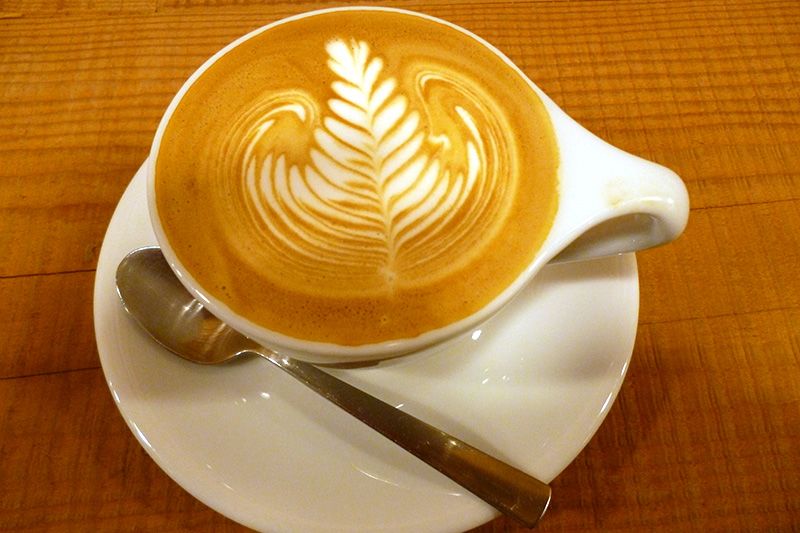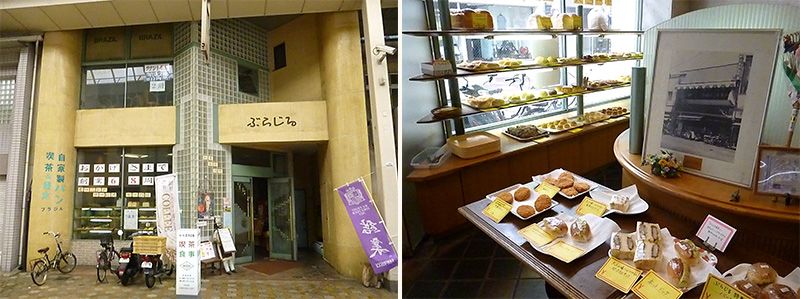
Japan Brews Up a Rich Coffee Culture
Economy Culture Lifestyle- English
- 日本語
- 简体字
- 繁體字
- Français
- Español
- العربية
- Русский
Coffee Beans off the Beaten Track
After stepping into the café, I’m led to a table and shown a menu. On it are such selections as the café’s special blend, a Colombia coffee named Glorious, Golda from the Los Pirineos Farm in El Salvador, as well as a choice from Kenya, Mandheling from Indonesia, and a Panama variety named Geisha Natural 97. These are just a few of the over 20 different coffees available to customers at Saza Coffee in Ibaraki Prefecture—a café that contracts directly with coffee plantations around the world for its diverse lineup.
Saza Coffee is located in Hitachinaka, a city of roughly 150,000 near the prefectural capital Mito. The café is a ten-minute walk from Katsuta Station, which is an hour and a half away from Tokyo Station by express train. Even on a weekday afternoon, cars crowd the parking lot in front of the arched building that houses the café.
Founder Suzuki Yoshio has been running the café for 46 years. His passion for coffee and prodigious lineup of offerings has won the establishment a large and loyal following.
The fact that a café with such an impressive selection of coffees could thrive in a small regional city far away from the bustling office districts of major urban centers is a testament to the deep roots of Japan’s coffee culture today.
 A view of Saza Coffee in Hitachinaka, a café famous for its extensive coffee menu.
A view of Saza Coffee in Hitachinaka, a café famous for its extensive coffee menu.
Coffee Gets More Convenient
In 2013, the major convenience store chain Seven-Eleven introduced a freshly brewed takeout coffee for just ¥100 called Seven Café at its 16,000-plus outlets in Japan. After paying at the counter, customers are given a cup for the coffee machine, which serves up freshly ground coffee at the press of a button. The new service has been a huge hit, particularly among office workers who like to grab a cup on the way to work. Currently, Seven-Eleven stores in Japan sell around 120 cups a day on average.
In February 2015, Blue Bottle Coffee, a West Coast coffeehouse chain that has been a driving force behind the so-called “third wave” coffee boom in the United States, arrived in Japan, opening a café in Tokyo amid much fanfare. And even now, several months later, long lines of customers continue to form outside the shop. The debut of Starbucks in Japan dates back 19 years to when the company opened its first café in Ginza. Now the chain has spread to all 47 of Japan’s prefectures and has a total of over 1,000 outlets.
Data for 2012 shows that Japan has more than 70,000 cafes—a figure that does not include temporary shops set up for events. And if the figure were to include the coffee available at convenience stores or fast food chains, for example, it would be much larger.
Looking at this data and recent trends, the tremendous popularity of coffee and coffeehouse culture in Japan is clear. Even though Japan’s consumption does not yet rival that of the United States or Germany, it has become one of the world’s top coffee importers.
Why Coffee Is So Hot
How is it that coffee has become so popular in the land of green tea? Arriving at the answer to that question requires a look beyond just coffee itself or cafes. It seems to boil down to three main factors from the perspective of people’s lifestyles:
- The stimulating influence of Western culture and desire to match and surpass it
- The tendency of Japanese to incorporate foreign products and customize them to suit Japanese tastes
- The growing diversity of businesses and increase in consumer choices
Let’s take a closer look at each of the three factors.
First of all, there is the desire to “match and surpass” Western culture. It is a phenomenon that can be seen in the case of Japanese automakers like Toyota, which once looked to its US rivals Ford and GM as the benchmark in raising its own level of quality. And that same historical process was true for high-precision manufacturers like Canon, which sought to raise the quality of its cameras by learning from the German maker Leica.
Japanese companies both large and small have had a strong focus on manufacturing craftsmanship, or monozukuri. This outlook can be seen in the case of today’s small, independently owned coffeehouses. Saza Coffee, for example, was built up by the tireless efforts of its owner Suzuki, who honed his skills as a coffee roaster through a process of trial and error that began with teaching himself the craft by studying specialist magazines. His passion for his profession has taken him around the world to visit coffee plantations, where he determines which beans meet his exacting standards. He has even gone so far as to develop his own plantation in Colombia to supply his shop with beans.
Japan has also become a country known for the skills of its baristas. Japanese competitors have captured titles at the World Barista Championship and they have also walked away with the World Latte Art Championship and other prizes for their foamy creations.
 Latte art adds a pleasant touch to a coffee break.
Latte art adds a pleasant touch to a coffee break.
Customizing Coffee
The second key factor involves how Japan customizes foreign products and trends to suit its own sensibilities. Of course, other countries do this as well, but Japan is known for product development based on thoroughly gauging consumer preferences in order to implement significant improvements.
For example, the Japanese rice ball (onigiri) is the result of taking rice that originated from the Asian continent and adding a variety of different ingredients, like sour plum or grilled salmon. In the case of ramen, too, the noodle dish diversified as shops competed against each other to come up with different soup flavors based on soy sauce, miso, salt, or pork.
And the same has been true in the case of coffee, where Japanese consumers have an abundance of choices to suit their needs.
The third factor, as mentioned above, is the diversification of business types. I have written in the past about how the basic approach to the café business in Japan has been to not only provide the basics, in terms of providing a location and food and drink items, but also coming up with the added value that will attract customers. For instance, around half a century ago, Japan offered consumers “singing cafes” where they could sing songs along with a cup of coffee or “go-go cafes” where customers had a chance to dance.
Today, as well, we can see examples of such added value in the dog cafes that allow customers to bring along their pets, cat cafes letting patrons interact with a host of feline inhabitants, or “maid cafes” where waitresses dress up in alluring costumes and fawn over customers—a new twist on the café business that has won fans among foreign visitors to Japan as well.
There are also high-end cafés, of course, where customers can find such options as original “single-bean” coffees made with a particular type of bean recommended by the owner, or stores that sell specialty coffees made with high-quality beans.
Walk around the fashionable districts of larger Japanese cities and you will encounter all sorts of different cafés. The range of prices for a cup of coffee vary from as low as ¥200 to up to ¥1,000, but most offer a cup for around ¥500. And there are a variety of stores where that ¥500 coin will not only buy a cup of joe, but provide a customer the chance to take a breather or shrug off their everyday cares.
For instance, cafes in Nagoya have long offered a “morning service” from around 10 to 11 a.m. that provides toast and a boiled egg for free to those who order a cup of coffee. The Nagoya-based chain Komeda Coffee has promoted this service in expanding its cafes in Tokyo, with coffee sold for ¥420 a cup. Already the chain’s network of cafes has expanded to over 600 in Japan.
Actually, the first place in Japan to offer this sort of morning service was, not Nagoya, but the Ruhe Brazil café in Hiroshima.
Great Way to Start the Morning
On May 19 of this year I went to Hiroshima to visit Ruhe Brazil. On the wall of the establishment is a photo from 1956 of a sign reading “Morning” to advertise the morning service at the café. The current owner Suehiro Katsuhisa is the son of the late owner Suehiro Takutsugu who came up with the idea for menu item just after the end of World War II, when Japan was still suffering food shortages. For ¥60 a customer received toast, a small fried egg, and a cup of coffee. This was a good deal considering that a cup of coffee alone back then usually cost ¥50. The special offer was covered in a magazine article at the time, which apparently led the idea to spread around Japan.
Today, Ruhe Brazil is a cafe and bakery. Around 500 to 600 customers visit the shop every day, says Suehiro, many of them coming just to buy bread. The café used to be near Hiroshima University. Even though the campus was later moved to a different spot, the alumni from the time—now in their sixties and retired—often stop by with their spouses.
 Exterior of the Ruhe Brazil café (left); above the table with freshly baked bread is a photo of the café taken in 1956.
Exterior of the Ruhe Brazil café (left); above the table with freshly baked bread is a photo of the café taken in 1956.
Even though chain coffeehouses like Starbucks or Komeda Coffee are sprouting up everywhere in Japan, there are also mom-and-pop cafes like the ones in Ibaraki and Hiroshima profiled here, which are supporting a local coffee culture. The earnest efforts of these local owners and their attention to detail is the basis for today’s diverse café scene in Japan.
If you happen to come across a locally run café in Japan it’s worth stepping inside—a special experience might be waiting for you.
(Original Japanese article posted on May 29, 2015; text and photographs by Takai Naoyuki.)
Seven Eleven Starbucks Coffee Blue Bottle latte art barista Komeda